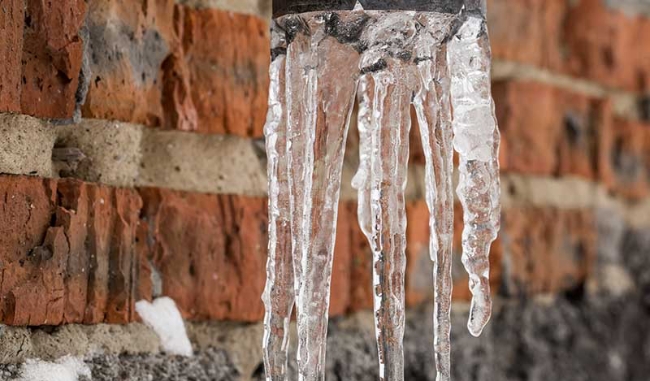Preventing Frozen Plumbing: Effective Methods for Cold Weather
Preventing Frozen Plumbing: Effective Methods for Cold Weather
Blog Article
How do you really feel in regards to How to Prevent Your Pipes From Freezing?

Winter can wreak havoc on your plumbing, specifically by freezing pipes. Below's how to stop it from happening and what to do if it does.
Introduction
As temperature levels decrease, the danger of icy pipelines boosts, potentially causing pricey repairs and water damage. Understanding exactly how to avoid frozen pipes is essential for homeowners in cool environments.
Understanding Icy Pipelines
What triggers pipelines to ice up?
Pipes freeze when exposed to temperature levels below 32 ° F (0 ° C) for expanded periods. As water inside the pipelines freezes, it increases, putting pressure on the pipeline wall surfaces and potentially triggering them to burst.
Threats and damages
Frozen pipelines can lead to water system interruptions, residential property damages, and pricey repair work. Burst pipes can flooding homes and create comprehensive architectural damages.
Indicators of Frozen Pipeline
Determining frozen pipes early can stop them from breaking.
How to recognize frozen pipelines
Look for decreased water circulation from taps, uncommon odors or noises from pipes, and noticeable frost on revealed pipes.
Prevention Tips
Insulating vulnerable pipelines
Wrap pipes in insulation sleeves or make use of warm tape to safeguard them from freezing temperatures. Concentrate on pipes in unheated or exterior locations of the home.
Heating strategies
Keep indoor areas appropriately heated up, especially locations with pipes. Open closet doors to permit warm air to flow around pipes under sinks.
Protecting Outside Pipes
Garden tubes and outside taps
Detach and drain garden pipes before winter season. Mount frost-proof spigots or cover exterior taps with insulated caps.
What to Do If Your Pipes Freeze
Immediate activities to take
If you suspect frozen pipes, keep faucets open up to alleviate stress as the ice melts. Make use of a hairdryer or towels soaked in hot water to thaw pipes slowly.
Long-Term Solutions
Structural adjustments
Take into consideration rerouting pipelines far from outside wall surfaces or unheated locations. Add extra insulation to attics, cellars, and crawl spaces.
Updating insulation
Buy premium insulation for pipelines, attics, and walls. Correct insulation helps preserve regular temperature levels and lowers the danger of frozen pipes.
Final thought
Stopping frozen pipes requires proactive actions and fast responses. By recognizing the causes, indicators, and safety nets, property owners can shield their plumbing throughout cold weather.
5 Ways to Prevent Frozen Pipes
Drain Outdoor Faucets and Disconnect Hoses
First, close the shut-off valve that controls the flow of water in the pipe to your outdoor faucet. Then, head outside to disconnect and drain your hose and open the outdoor faucet to allow the water to completely drain out of the line. Turn off the faucet when done. Finally, head back to the shut-off valve and drain the remaining water inside the pipe into a bucket or container. Additionally, if you have a home irrigation system, you should consider hiring an expert to clear the system of water each year.
Insulate Pipes
One of the best and most cost-effective methods for preventing frozen water pipes is to wrap your pipes with insulation. This is especially important for areas in your home that aren’t exposed to heat, such as an attic. We suggest using foam sleeves, which can typically be found at your local hardware store.
Keep Heat Running at 65
Your pipes are located inside your walls, and the temperature there is much colder than the rest of the house. To prevent your pipes from freezing, The Insurance Information Institute suggests that you keep your home heated to at least 65 degrees, even when traveling. You may want to invest in smart devices that can keep an eye on the temperature in your home while you’re away.
Leave Water Dripping
Moving water — even a small trickle — can prevent ice from forming inside your pipes. When freezing temps are imminent, start a drip of water from all faucets that serve exposed pipes. Leaving a few faucets running will also help relieve pressure inside the pipes and help prevent a rupture if the water inside freezes.
Open Cupboard Doors
Warm your kitchen and bathroom pipes by opening cupboards and vanities. You should also leave your interior doors ajar to help warm air circulate evenly throughout your home.

Do you like reading about How to Prevent Your Pipes From Freezing? Create a remark down the page. We would be pleased to listen to your thinking about this blog. We hope that you visit us again before long. Sharing is nice. You just don't know, you may just be doing someone a favor. I appreciate reading our article about How to prepare your home plumbing for winter weather.
Visit Url Report this page